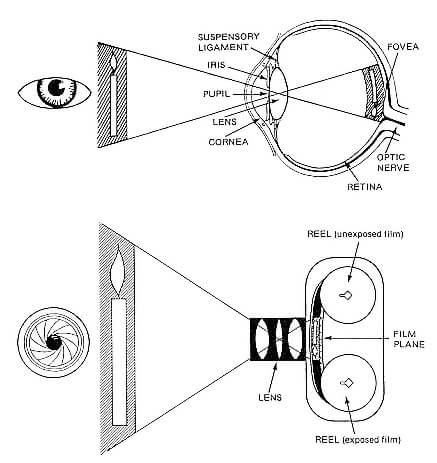Your Cornea behaves much like the front lens element of a lens. Together with the lens, which is behind the iris, they are the eye’s focusing elements. The cornea takes widely diverging rays of light and bends them through the pupil, the round opening in the central portion of the colored iris.
Your Iris and pupil act like the aperture of a camera. The iris is a muscle which, when contracted, covers all but a small central portion of the lens, allows adjustable control of the quantity of light entering the eye so that the eye can work well in a wide range of viewing conditions, from dim to very bright light.
Finally, your Retina is the sensory layer that lines the very back of our eyes. It acts very much like the imaging sensor chip in a digital camera. The retina has numerous photo receptor nerve cells that help change the light rays into electrical impulses and send them through the optic nerve to the brain where an image (of what we see) is finally received and perceived. Because of this reception and perception function, retina is, perhaps, the most important component of our eyes. As with the camera, if the “film” is bad in the eye (i.e. the retina), no matter how good rest of the eye is, we will not get a good quality image or picture.
